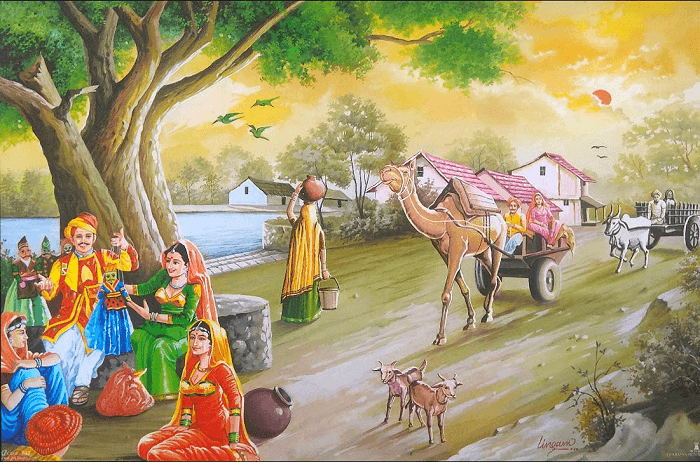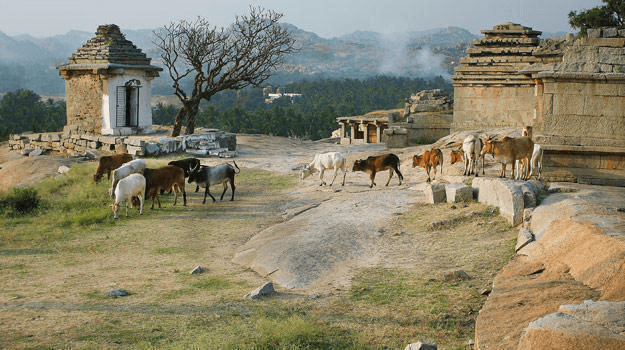Difference Between Village and CityIntroductionVillagesand Cities are different human settlements characterized by distinct features and lifestyles. A village is a small, rural settlement typically consisting of a few hundred to a few thousand people. Villages are often located in the countryside and are usually centered around agricultural activities. In contrast, a City is a larger urban settlement with a population ranging from tens of thousands to millions. Cities are often the centers of commerce, industry, and innovation. One of the main differences between villages and cities is their population size. Villages are typically small, close-knit communities where everyone knows each other. At the same time, cities are much larger and more diverse, with people from different cultural and socioeconomic backgrounds living and working together. Another difference between villages and cities is their physical size and infrastructure. Villages are usually small and compact, with fewer buildings and more natural surroundings. In contrast, Cities are often characterized by large skyscrapers, bustling streets, and modern infrastructure, including transportation systems, hospitals, schools, and shopping centers. Regarding style, Villages tend to be more traditional and family-oriented, with a slower pace of life and a stronger sense of community. Village people are often closely connected to the natural world and engage in agricultural activities like farming and animal husbandry. In contrast, city life is fast-paced and more individualistic, with people often focused on their careers and personal goals. The city lifestyle is characterized by technology, innovation, and cultural diversity. Village
Something about the allure of a tiny, rural community captivates our hearts and minds. Villages provide a distinct and intriguing way of life, from the charming, old-fashioned architecture to the close-knit communal spirit. Following are some of the characteristics that distinguish villages:
Villages provide a distinct way of life anchored in tradition, community, and environment. While living in a rural region has drawbacks, the benefits of a slower pace of life and a strong sense of connection to the environment around us may make it a very fulfilling experience. City
Cities are bustling, vibrant, and dynamic places where people come together to live, work, and play. With their towering skyscrapers, bustling streets, and endless people, cities are a constant source of excitement and energy. Here are some key features and characteristics of cities:
Lifestyle in VillageWelcome to the wonderful world of village life! Living in a village is like taking a step back in time, where people live a simpler, more traditional way of life. If you're curious about life in a village or considering moving to a town, read on! In a village, people's lives revolve around cycles of nature. Agriculture is the primary income source, meaning people deeply understand their local environment and use natural resources. The daily routine may involve tending to crops, caring for livestock, or working in the fields. The beauty of it is that there's always something to do. One of the best things about village life is the sense of community. People know each other well and often share common culture and language. Social interactions are informal and intimate, making friends and connecting with others easier. Togetherness makes village life special, whether chatting with neighbors or participating in community events. Community events, traditions, and festivals are a big part of village life. People celebrate various events like weddings, religious festivals, and cultural events that bring the community together. These events often include music, dance, and traditional foods, adding to village life's excitement and joy. Imagine the sounds of drums and flutes in the air, the aroma of delicious food cooking, and the vibrant colors of traditional clothing. It's a truly immersive experience. Village housing differs from cities, with people usually living in small houses made of local materials such as mud, thatch, or wood. Families may live under one roof, with grandparents, parents, and children sharing a house. This creates a sense of togetherness and closeness among family members, which is often missing in city life. Villagers are closely connected to nature and the environment, with many relying on natural resources such as forests, rivers, and fields for their livelihoods. As a result, villagers tend to have a deep respect for the natural world and may have unique knowledge about local plants, animals, and ecosystems. They understand the importance of preserving nature for future generations and living in harmony with the environment. Village in the Past
Village life during ancient and medieval periods varied greatly depending on the location and time period. Ancient Period:
Medieval Period:
Lifestyle in CityAre you curious about what life is like in a city? If you're considering moving to a town or just curious about how city life differs from village life, read on! City life is fast-paced and dynamic, with a constant buzz of activity and energy. From the hustle and bustle of people commuting to work to the vibrant nightlife and social scene, there's always something happening in the city. One of the biggest differences between city and village life is housing. In the city, people often live in apartments or condominiums, which are smaller and more compact than village houses. This is due to the limited space available in cities and the high cost of land and housing. However, the benefit of living in a smaller area is that it can be easier to maintain and clean and save on utilities. Another big difference between city and village life is the social scene. In the city, people can access various entertainment options, from theaters and museums to shopping malls and restaurants. There are always new and exciting things to do and explore, making city life engaging and interesting. Regarding employment opportunities, cities offer diverse options, from white to blue-collar jobs. This variety of employment allows people to pursue their career aspirations but can also lead to competition and stress. Commuting to work in cities can also be time-consuming, and many people spend a significant amount of time each day traveling to and from work. While city life may have challenges, it can also be rewarding and exciting. The key is to find a balance between work, social life, and downtime. City life offers many opportunities for personal growth and development, a vibrant social scene, and access to many resources and amenities. Ultimately, where to live depends on personal preferences, career goals, and individual circumstances. Whether you prefer the fast-paced energy of the city or the slower pace of village life, there's a place for everyone to call home. Difference between Village and City
Next TopicDifference between
|
 For Videos Join Our Youtube Channel: Join Now
For Videos Join Our Youtube Channel: Join Now
Feedback
- Send your Feedback to [email protected]
Help Others, Please Share










